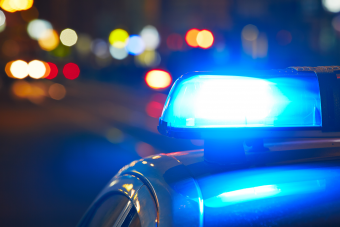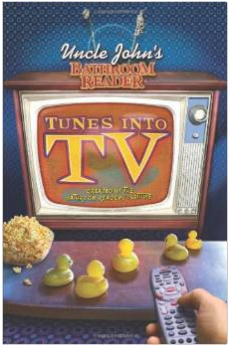A COPS Story
 COPS has been a Saturday night TV staple for so long—29 seasons—that it’s easy to forget what a groundbreaking show it was when it debuted in 1989.
COPS has been a Saturday night TV staple for so long—29 seasons—that it’s easy to forget what a groundbreaking show it was when it debuted in 1989.
FIRST-PERSON PERSPECTIVE
In the early 1980s, an aspiring filmmaker named John Langley began work on Cocaine Blues, a documentary about the crack cocaine epidemic sweeping the country. As part of the project, he filmed law-enforcement operations, including drug busts and police raids.
At first Langley obtained the footage as an objective bystander, but that ended when an officer invited him to suit up in tactical gear and follow the police as they moved in. For the first time, Langley understood the stress and danger (and the adrenaline rush) that police experience daily. And the footage he shot during the raid was some of the most compelling he’d ever seen. He thought it might be possible to build an entire show around it.
KEEPING IT REAL
As Langley developed the idea for a show he called Street Beat, he decided it should be presented in a minimalist, cinema verité style—the edited footage would be presented as-is, without a narrator, script, music, staged reenactments, much editing, or any other standard TV storytelling conventions to distract the viewing audience. He didn’t want a host or anyone else telling people what to think about what they were seeing.
Langley believed that such a show would be successful, but ABC, CBS, and NBC weren’t convinced and passed on the idea. Even Langley’s business partner, Malcolm Barbour, was skeptical. The concept was so unusual, and even if it was a good idea, it wasn’t clear that a beginner like Langley would be able to pull it off.
With no takers for Street Beat, Langley and Barbour’s production company spent the next few years producing a series of crime-themed syndicated TV specials (which included footage of police ride-alongs) hosted by Geraldo Rivera. The specials were very successful and helped to raise Langley’s profile in the TV business. But if he thought that would make it easier for him to find a buyer for the show he now called COPS, he was wrong: ABC, CBS, and NBC still said no.
THE ROOKIE
By 1987, however, there was a new player in network television: Fox. The upstart network had been on the air since October 1986, but few of its shows were successful. Fox was struggling not just to stay afloat but also to forge an identity distinct from the Big 3 networks—its survival strategy was to put unusual new shows on the air. And thanks to a looming TV writers’ strike that looked like it might drag on for months, Fox was particularly interested in shows that didn’t require writers or scripts.
Langley and Barbour put together a reel of the best police-raid footage from the Geraldo crime specials and made a sales pitch to three Fox executives: CEO Barry Diller; programming head Steve Chao; and a third, unidentified man who sat in the corner taking notes—Langley assumed he was an accountant. After they made their presentation, the man taking notes, who turned out to be Fox chairman Rupert Murdoch, told Diller, “order four of ’em.” Langley and Barbour had a deal.
COP-SPAN
To film the pilot, Langley went to the same person he’d gone to when he needed police footage for his Geraldo specials: Sheriff Nick Navarro of Broward County, Florida. Navarro was bothered by the fact that the public’s understanding of law enforcement was informed by fictional and wildly inaccurate movies and TV shows such as Dirty Harry and Miami Vice. He saw COPS as an almost C-SPAN-like chance to depict law enforcement as accurately and honestly as possible, and he believed that such transparency was essential in a free society. He happily allowed Langley to film his officers at work.
If you watch the hour-long COPS pilot, you may be surprised at how different it is from the modern version of the show. The most glaring difference is the inclusion of scenes of the officers in their own homes—cooking dinner with their families, watching TV, and playing with their children. One officer and his wife even argue about their relationship in front of the COPS camera crew. Langley says Fox forced him to insert the cops-at-home footage into the pilot against his better judgement, theorizing that if the cinema verité footage didn’t hook the audience, the real-life soap opera storylines would. The COPS pilot aired on Saturday, March 11, 1989. Ever since then, the show has aired on Saturday night.
ONE, TWO, THREE
Fox didn’t promote COPS very heavily, but the show still managed to find an audience, which grew quickly thanks to positive word of mouth. As it did, Langley set to work stripping out all the features the network had forced on him—background music, the “soap opera” subplots, and the scenes shot at police headquarters, which he believed were unnecessary and much less interesting than scenes of police in the field. In the process, he also developed the three-stories-per-episode format that continues to this day:
- The first segment is a dramatic “action” sequence of some kind, often involving a police chase of a vehicle, or of a suspect on foot.
- The second segment is slower and often contains emotional or humorous content (such as the scene where a suspect repeatedly denies that he uses drugs, not realizing that he has a marijuana cigarette tucked behind his ear until the officer plucks it out).
- The third segment aims to give the audience something to think about, such as the methods used to take an uncooperative suspect into custody, or the social costs associated with treating drug addiction as a criminal problem instead of a public health issue.
BAD BOYS, BAD BOYS
Twenty-three years and more than 900 episodes later, COPS remains the most successful reality series on network television. Its role in shaping the public’s perception of law enforcement has been profound, and it has produced an entire generation of officers who first developed an interest in police work while watching COPS when they were kids.
Perhaps the show’s most unusual claim to fame is how it turned its “Bad Boys” theme song into the most quotable, if not the most famous, reggae song in history. From the beginning, Langley wanted COPS to be the first-ever network show with a reggae theme song, and while filming the pilot in Florida he had his field producers scour local record stores in search of just the right song.
Someone found “Bad Boys,” sung by the Jamaican band Inner Circle. “I said, ‘That’s it, that’s the song,’ Langley remembers. ‘I mean, it was just too good. You know, “…bad boys, bad boys, what you gonna do, what you gonna do when they come for you?” It was just too perfect.’” The song was released as a single in 1993 and hit the Top 10.
MAKING THE SHOW
- In a typical week of production, as many as a dozen two-person COPS film crews are riding along with police officers all over the U.S. Most production takes place during warmer months, when crooks are more likely to be out and about. That explains why you hardly ever see a police chase in the snow…but you see plenty of suspects who are sweaty and shirtless.
- On average, it takes about 18 hours of unedited police footage to produce the 22 minutes of material that make up an episode.
- COPS has been filmed in Hong Kong, Great Britain, Russia… but never in Canada. Why not? “Canada has far less crime than we do in the States,” Langley told the Ottawa Citizen in 2008.
“I’M ON TV!”
- If you (like Uncle John) live in terror of COPS filming in your town on that one worst day of your life, when you’re drunk, half naked, and screaming in the middle of the street, fear not: COPS can’t show your face on TV without your consent. Every face shown on the program is the face of a person who has signed a release form.
- In the early years, getting suspects to sign the release forms wasn’t easy; many faces had to be digitally blurred as a result. But now that the show is famous, more than 90% of suspects sign them. “When they hear that we’re not a news camera, that we’re COPS, they generally exclaim, ‘Oh, that’s great! When will I be on?’” Langley says.
 This article is reprinted with permission from Uncle John’s Bathroom Reader Tunes Into TV. Here comes your wacky neighbor Uncle John to present TV the way only he can. From test patterns to Top Chef, from My Three Sons to Mad Men, as well as TV news, advertising, scandals, sitcoms, dramas, reality shows, and yadda yadda yadda, Uncle John’s Bathroom Reader Tunes into TV is “dy-no-mite!”
This article is reprinted with permission from Uncle John’s Bathroom Reader Tunes Into TV. Here comes your wacky neighbor Uncle John to present TV the way only he can. From test patterns to Top Chef, from My Three Sons to Mad Men, as well as TV news, advertising, scandals, sitcoms, dramas, reality shows, and yadda yadda yadda, Uncle John’s Bathroom Reader Tunes into TV is “dy-no-mite!”
Since 1987, the Bathroom Readers’ Institute has led the movement to stand up for those who sit down and read in the bathroom (and everywhere else for that matter). With more than 15 million books in print, the Uncle John’s Bathroom Reader series is the longest-running, most popular series of its kind in the world.
If you like Today I Found Out, I guarantee you’ll love the Bathroom Reader Institute’s books, so check them out!
| Share the Knowledge! |
|




